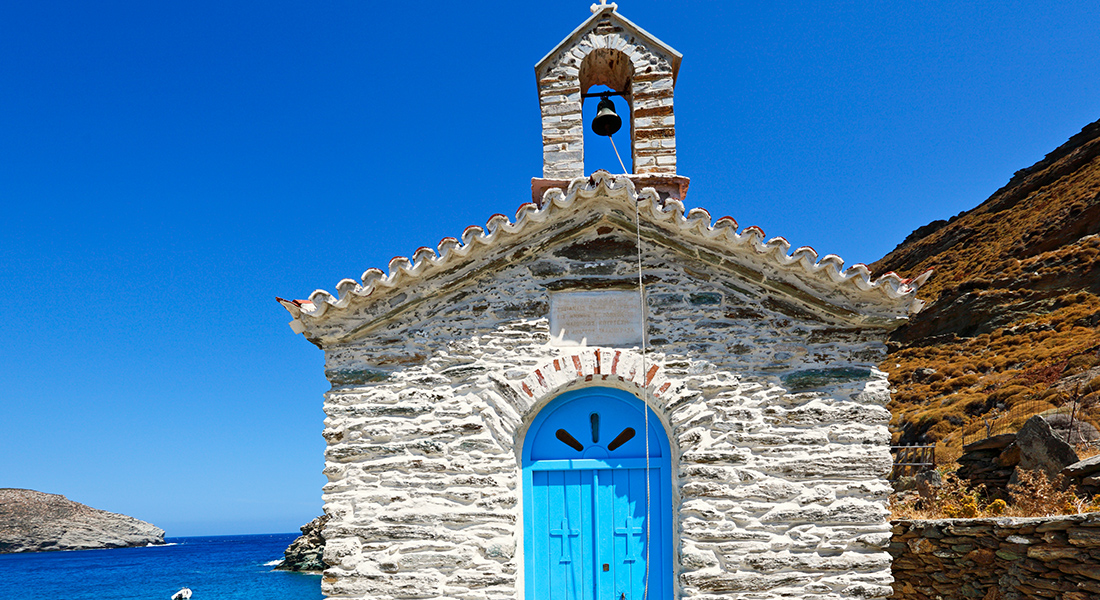
Andros island by GNTO
It is the northernmost island of the group with a great naval tradition and no landscape like the postcards from the Cyclades: apart from the sandy beaches, there are rocky coastlines, mountain ranges alternating with fertile plains, lush vegetation and abundantly flowing streams.
The capital of the island, Hóra (which means “main village”) is home to famous Greek captains and ship owners, and there is a remarkable combination of medieval, neoclassical and island style evident in its houses. Flights of stairs, a spacious square with trees, narrow streets, remarkable churches and museums, shops, cafes and restaurants play their part in the beauty of the place. To top that beauty off, there is a Frankish castle on an islet connected to the main island with an arched stone bridge of the 13th century.
Enjoy the flora of the main island: chestnut, walnut, sycamore, oak, weeping willows, poplar, mulberry, osier and olive trees, fields of thyme, crocus and sage, and, in between, paved paths connect them to the beautiful village of Messariá and the village of Faneroméni within a castle that is ten centuries old and perched at an elevation of 600 m. Don’t forget to pay a visit at the monasteries of Zoodóchos Piyí in Batsí and of Panayia Tomarhiani in Korthi.
Paleópolis lies at 16 km west of Hóra, and used to be the ancient capital town of Ándros, having prospered from the classical to the late roman times. The prehistoric settlement of Pláka, the settlement of Zagora dating to the Geometric period, and the fortified settlement of the Neolithic times (4,500-3,300 BC) with rock paintings of animals, ships and linear designs have all been unearthed in the wider area.
Ándros is definitely worth a visit and can be seen solely as a cultural tourism destination, thanks to its museums. The globally acknowledged Museum of Modern Art, managed by the Vassilis and Eliza Goulandris Foundation, houses unique collections of paintings and sculptures, whereas the archaeological museums in Hóra and Paleópolis represent the ancient history of the island with their exhibits. The Cyclades Olive Museum is a fine example of a small pre-industrial, animal powered, olive oil producing unit that is definitely a must-see site.
